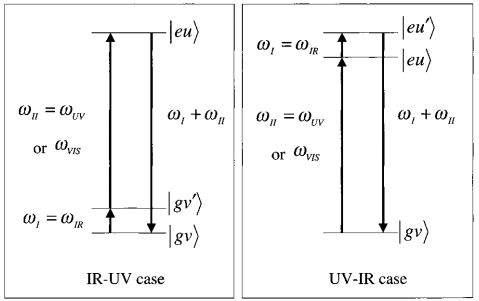A molecular theory for doubly resonant IR− UV-vis sum-frequency generation
| Reviews and Highlights | Quantum Science | Molecular and Soft-matter | Ultrafast Nano-optics and Nanophotonics | Mineralogy and Geochemistry |
|---|
Michitoshi Hayashi, Shenghsien H. Lin, Markus B. Raschke, and Yuen R. Shen
J. Phys. Chem. A 106, 2271 (2002).
DOI PDF

The experiment for measuring doubly resonant infrared-visible (IR-vis) sum-frequency generation (SFG) has recently been developed by Shen and his co-worker and applied to Rhodamine 6G on silica surfaces. In this paper, based on the Born−Oppenheimer adiabatic approximation, a molecular theory for doubly resonant IR-vis SFG generation as a two-dimensional surface spectroscopy is presented. We shall show that this new nonlinear spectroscopy is closely related to IR and resonance Raman spectroscopy. In this preliminary theoretical derivation, the displaced harmonic potential energy surfaces model for the electronic ground and electronically excited states of the system are used to obtain the band shape functions for doubly resonant IR-vis SFG at a finite temperature. One of the unique and powerful abilities of this spectroscopy is that interference effects among IR-active modes can be observed. The calculated excitation profiles and IR spectra of the doubly resonant IR−UV SFG from Rhodamine 6G on fused silica are demonstrated. We shall show that this new nonlinear spectroscopy can provide experimentalists with access to microscopic properties of molecules on surfaces or at interfaces.
